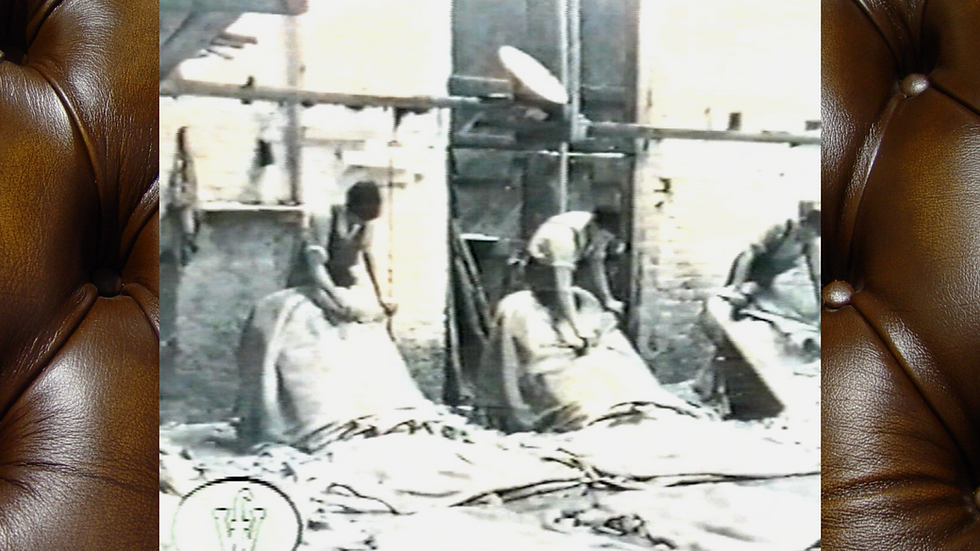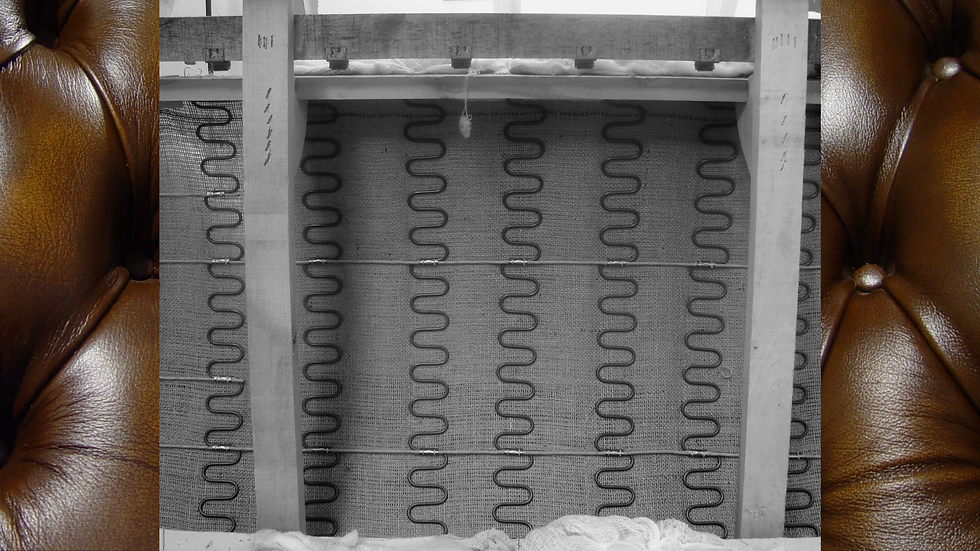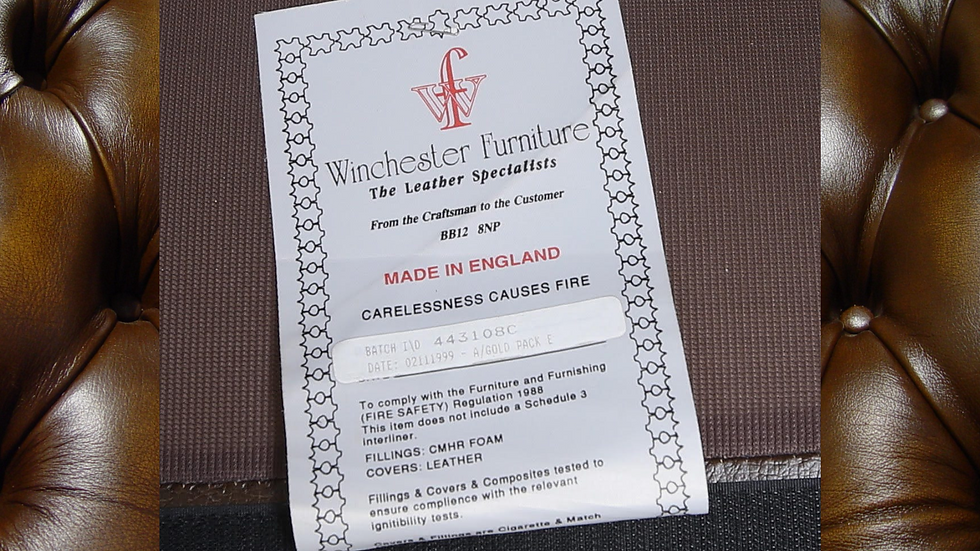top of page
Lord Phillip Stanhope
Chesterfield House, Westminster in 1760.
Chesterfield House was a grand London townhouse built between 1747 and 1752 by Philip Stanhope, 4th Earl of Chesterfield (1694–1773), statesman and man of letters. The exterior was in the Palladian style, the interior Baroque. It stood in Mayfair on the north side of Curzon Street, between South Audley Street and what is now Chesterfield Street.

Mr Dayrolles
Chesterfield sofas have a long, rich history that dates back to the 18th century. These grand and luxurious pieces of furniture were originally designed for royalty, providing an opulent level of comfort that is still sought after today. But what exactly is a Chesterfield sofa, and how has it evolved over time? In this article, we’ll explore the origins of these iconic couches and discuss why they remain popular in modern homes across the world. This timeless piece of furniture was first crafted for Lord Phillip Stanhope, 4th Earl of Chesterfield in England during the 1700s. His goal was to create seating with deep tufted upholstery for enhanced support and ultimate comfort - something he achieved with great success! Since then, Chesterfield sofas have become synonymous with wealth and luxury; from historical drawing rooms to contemporary living spaces, they represent a sense of freedom and sophistication like no other piece can. The allure of a classic Chesterfield sofa lies not only in its traditional design but also its versatility; many people love their ability to be dressed up or down depending on one's individual style preference. Whether you’re looking for an elegant statement piece or simply want to add some old-world charm to your home decor, there’s nothing quite like a Chesterfield couch when it comes to creating an inviting atmosphere in any space.

Origins Of The Design
The origins of the chesterfield sofa can be traced back to the early 19th century. It was designed for Lord Phillip Stanhope, also known as The 4th Earl of Chesterfield. He wanted a comfortable and stylish seating solution for his home library, so he commissioned furniture makers to craft a piece that would fit these needs perfectly. Leather was chosen as the material due its luxurious appeal and ability to last through time. This type of couch became popularized among members of high society who could afford such an expensive item. To this day, the design remains unchanged with deep-buttoned leather upholstery and rolled arms at either end creating a classic silhouette. Its timelessness has seen it become an icon in British interiors – appearing everywhere from pubs to palaces! Described as both grandiose yet practical, it is no surprise why people are still drawn towards it despite how long ago it first debuted on the scene. With its elegant leather upholstery, this beloved sofa continues to offer unsurpassable comfort and style.
Mr Dayrolles
"Lord Philip Stanhope was the fourth Earl of Chesterfield, which explains where the name ‘Chesterfield sofa’ comes from. As an admired politician, he was somewhat of a trendsetter. But how exactly did these first few Chesterfield sofas become world-renowned? It’s thought that on the March 24th, 1773 on his deathbed, Lord Stanhope told his butler to ‘Give Mr. Dayrolles a chair’, Dispite protests from Mr.Dayrolles that he meant him simply to sit on it, the trusty servant insisted and Mr.Dayrolles duly left the house clutching a chair; the style of which we can only assume was the forerunner of the now famous Chesterfield.
The Chesterfield Sofa Spreads
After mourning his godfather's passing and probably stewing a bit over his unconventional inheritance, Mr. Dayrolles came to appreciate the distinctive piece of furniture. A stunning and attention-grabbing chair clad in rich brown leather, adorned with large, deeply-set buttons and brass nail heads. Over its years of service, wear had somehow added to the armchair's character, becoming a truly timeless masterpiece. His friends and acquaintances admired the chair and many commissioned copies. It spread. An enduring style was established.

But In Truth
It’s unlikely that the Earl was truly responsible for the creation of the Chesterfield as we know it. Why do we say this? A few reasons.
First and foremost, the style of button tufting we associate with the traditional Chesterfield was not common in the Earl’s time. To ensure the longevity of an even and comfortable sit, tufting was a handsome and effective way to keep horsehair stuffing neatly in place however, that deep button tufting you will see did not emerge until the 19th century – well after the good Earl of Chesterfield had passed.
Even so, it takes more than mere tufting to define a Chesterfield. Today, the Chesterfield sofa can be so much more than just a tufted leather sectional with a nail head trim, the type that the Earl of Chesterfield might have commissioned. With paints and prints featuring our beloved Chesterfield sofa finally appearing in the mid-19th century, we can gaze back at the ancestral roots of this classic and appreciate how far we’ve come.

The first image of a Chesterfield sofa, dated 1857, appears in a James Roberts painting of Queen Victoria’s drawing room at the Balmoral Castle. The damask travels along opulent, roll-top arms, a low back, and what appears to be graciously deep button tufting. True to her legacy, Queen Victoria’s Chesterfield looks about as humble and conspicuous as the rest of her influence.

Shortly thereafter, a photo of the old library, or Bow Room in Buckingham palace 1860, displays a low-profile Chesterfield sneakily hiding out in the bottom left. Small, slight, but undeniable, our closest relative to the Bow Room Chesterfield is the acutely similar Viscount. Though the Viscount design we’ve cultivated over the years has evolved a high back, the remnants of English inspiration cling to its edges.

Looking introspectively, the Chesterfields in the Balmoral drawing room are strikingly similar to our London Chesterfield design (right). We see these elegant sofas as straight from the taste of Queen Victoria herself. Overtly curved arms and a highly aristocratic touch suggests more luxurious and curvy Chesterfields, such as our beloved London, tend to be drawn from inspirations of the Victorian era.

Popularity In The 19th Century
Pristinely polished and plushly perfect, the chesterfield sofa captivated crowds during the 19th century. Crafted with luxurious leather, these couches were considered a symbol of sophistication and grandeur. As their popularity spread, so did their presence in aristocratic abodes across Europe: In France they graced gilded galleries In England they added elegance to Edwardian drawing rooms In Germany they filled stately salons with style In Russia they adorned opulent parlors The trendiest of thrones, these sofas soon became an international hallmark of luxury living. From palaces to parlors, people everywhere sought out this timeless treasure for its unparalleled comfort and class. With its iconic tufting and deep seating design, it quickly became a classic that still stands today.
The Chesterfield Sofa Today
Today, the chesterfield sofa is still a symbol of timeless style and class. It comes in many styles, from vintage to modern designs, but always features iconic elements such as rolled arms and tufted buttons. Leather remains the most popular material for these couches, as it adds a touch of elegance that can't be found with other materials. Whether you're looking for something traditional or unique, there's sure to be a chesterfield couch out there that will fit your specific needs. The versatility of the chesterfield sofa has made it an increasingly sought-after piece of furniture over recent years. Its ability to work well in both classic and modern settings makes it perfect for any type of home décor. Plus, its superior craftsmanship ensures lasting comfort and durability - making this sofa not just stylish but also practical too. No matter what kind of look you're aiming for in your living space, the chesterfield sofa guarantees sophistication and luxury without sacrificing on quality. From adding subtle touches of character to creating statement pieces - investing in one of these sofas today could give your home the edge it needs to stand out from the crowd! With all these benefits, it's no wonder why this timeless design continues to remain so popular even after centuries since its introduction. Moving forward into the next section we'll explore some of the iconic components that make up a true Chesterfield Sofa.
Iconic Components Of A Chesterfield Sofa
The Chesterfield sofa has become an iconic piece of furniture for many homes. It is known for its distinct style and craftsmanship, including tufting on the back cushions and arms. This creates a look that is both timeless and comfortable.
While we see many forms of the Chesterfield throughout the 19th century, the first recorded usage of the word “Chesterfield” was not until 1900. Despite its 18th- and 19th-century roots, the Chesterfield seems to adapt itself to a variety of modern interiors. Whether upholstered in leather or in velvet, a Chesterfield sofa represents the best of marriages, one between exceptional comfort and gentlemanly style. It’s the kind of sofa that will bring elegance to any room, while also inviting us to plant ourselves against its tufted cushions, pick up a good book, and while away the hours lost in an adventure.
Elegant Leather Upholstery
The leather upholstery of Chesterfield sofas has long been revered, not only for its durability but also for its elegant look. The use of supple leather on these couches provides a luxurious and stately feel to any room. This type of sofa is typically made with leather that is then hand-tufted, creating an intricate design that adds texture and depth to the piece. The tufting process involves stitching together multiple sections of leather fabric in order to create a padded surface. As well as providing comfort, this technique gives each Chesterfield sofa it's classic style that makes it stand out from other furniture designs. The addition of buttons further enhances the visual appeal of this timeless piece by adding definition and class to the overall design. This traditional seating option has proven popular over many centuries due to its combination of sophistication and practicality. Its unique appearance remains highly sought after today, making it an ideal choice if you’re looking to add an air of distinction to your home decor. Moving forward into the next section we will explore why these iconic pieces gained popularity in the 19th century.
Iconic Components Of A Chesterfield Sofa

Leather

Hand Cutting

Precision Sewing
Winchester Furniture

Hard Wood Frame

Foam Padding

High Density Foam

Serpentine Back Springs

Spring Clips

Serpentine Seat Springs

Hessian Cover

Beep Buttoning

Tufting - Pleating

The Craftsman

Hand Studding

Leather Antiquing

Fire Safety Act 1988

Made in England


bottom of page





